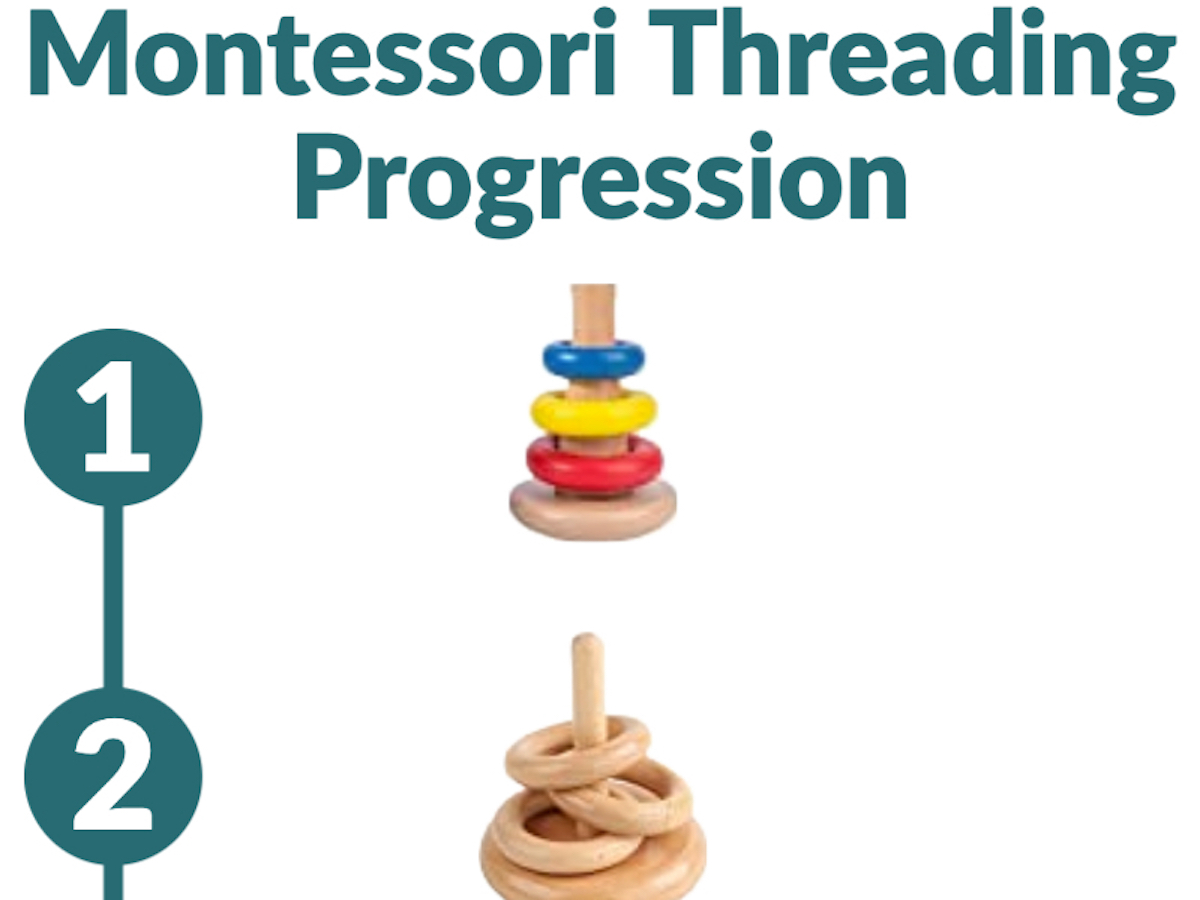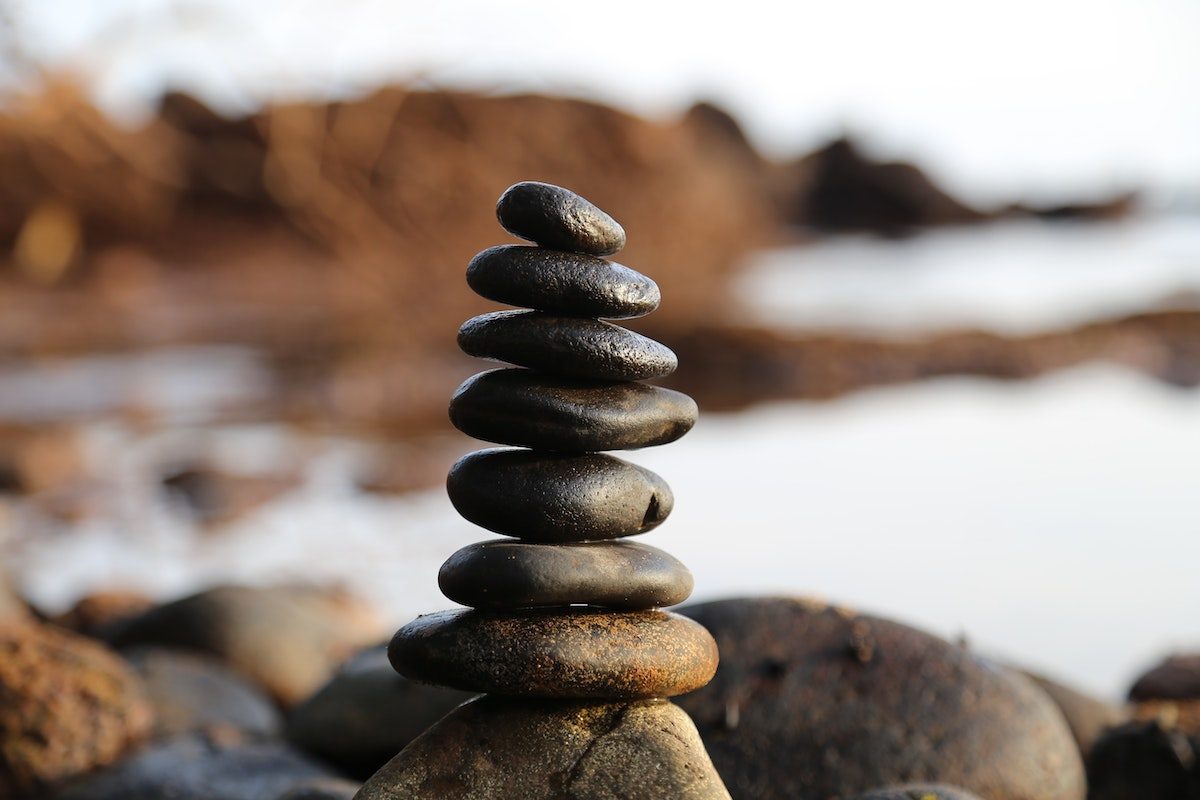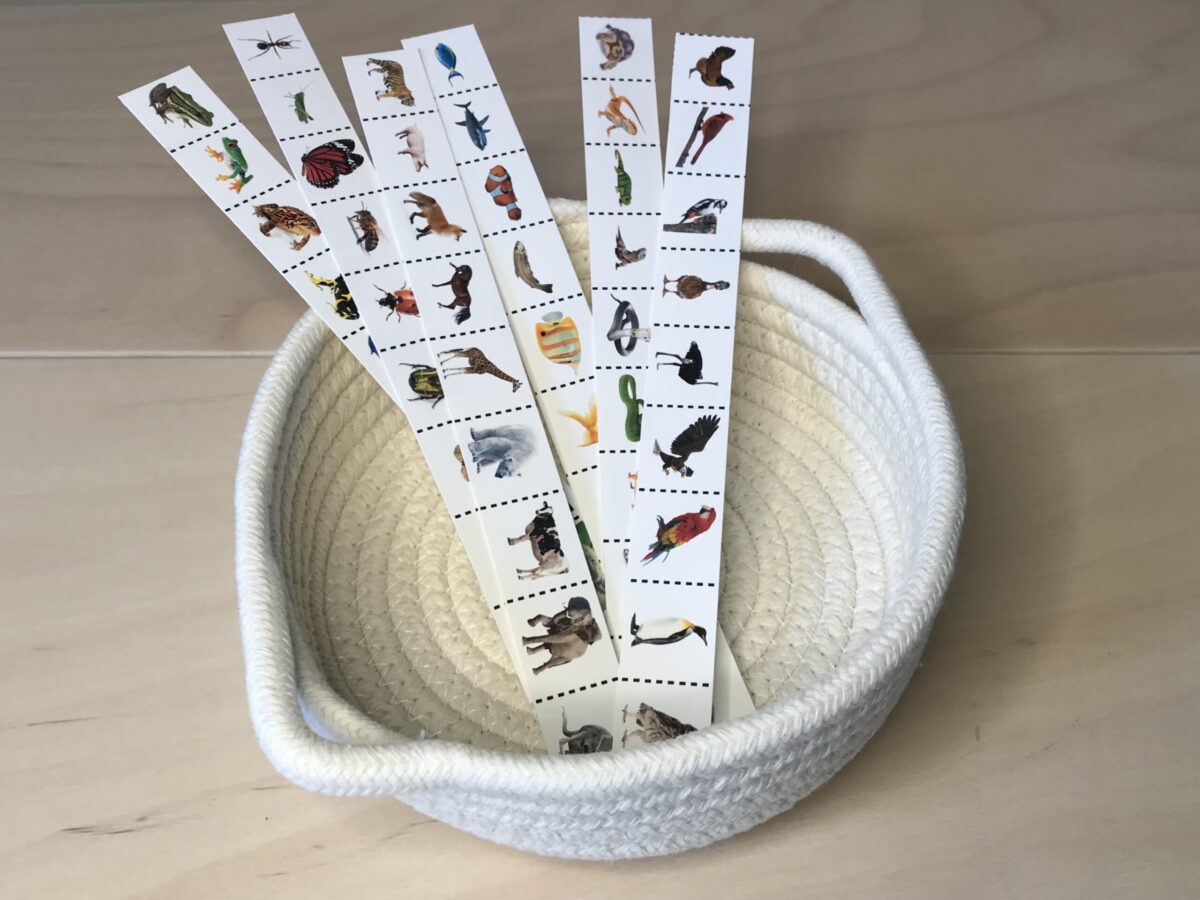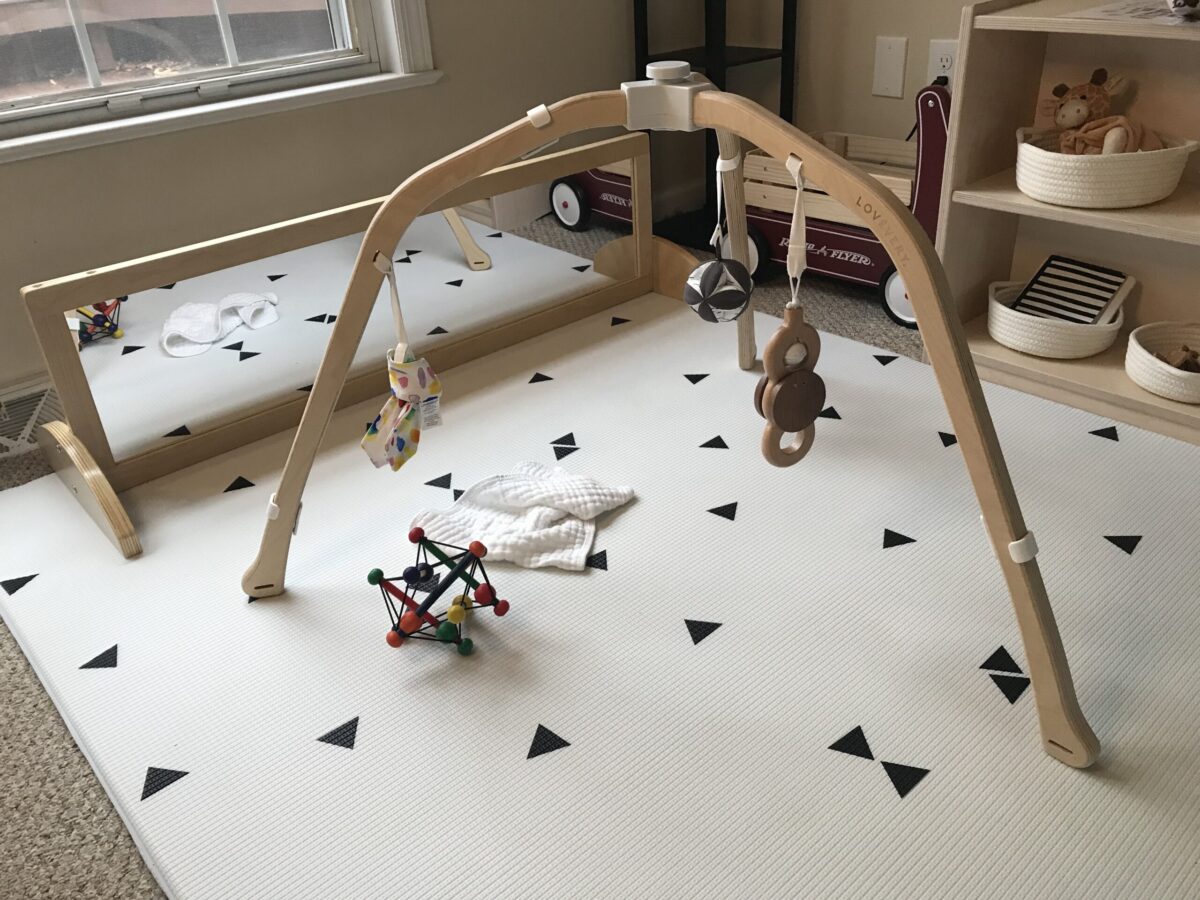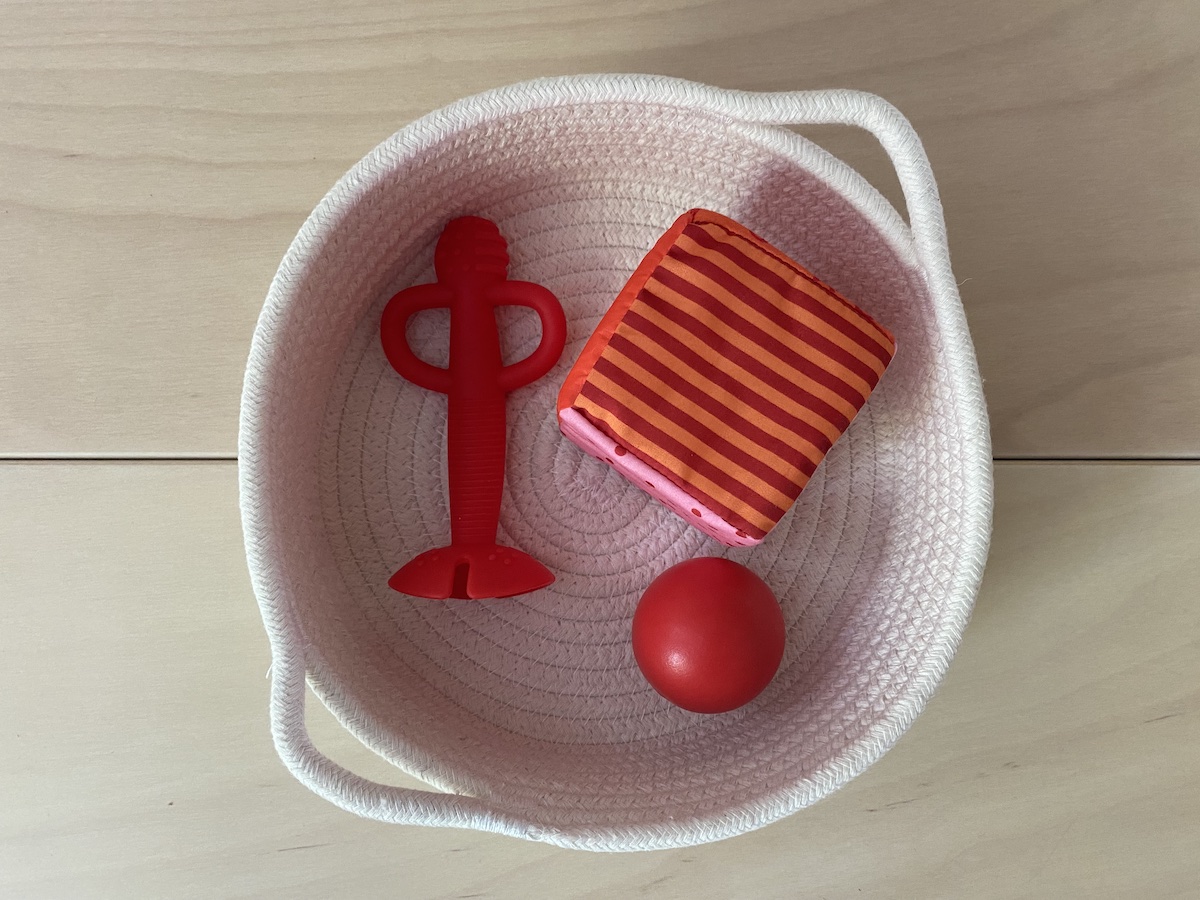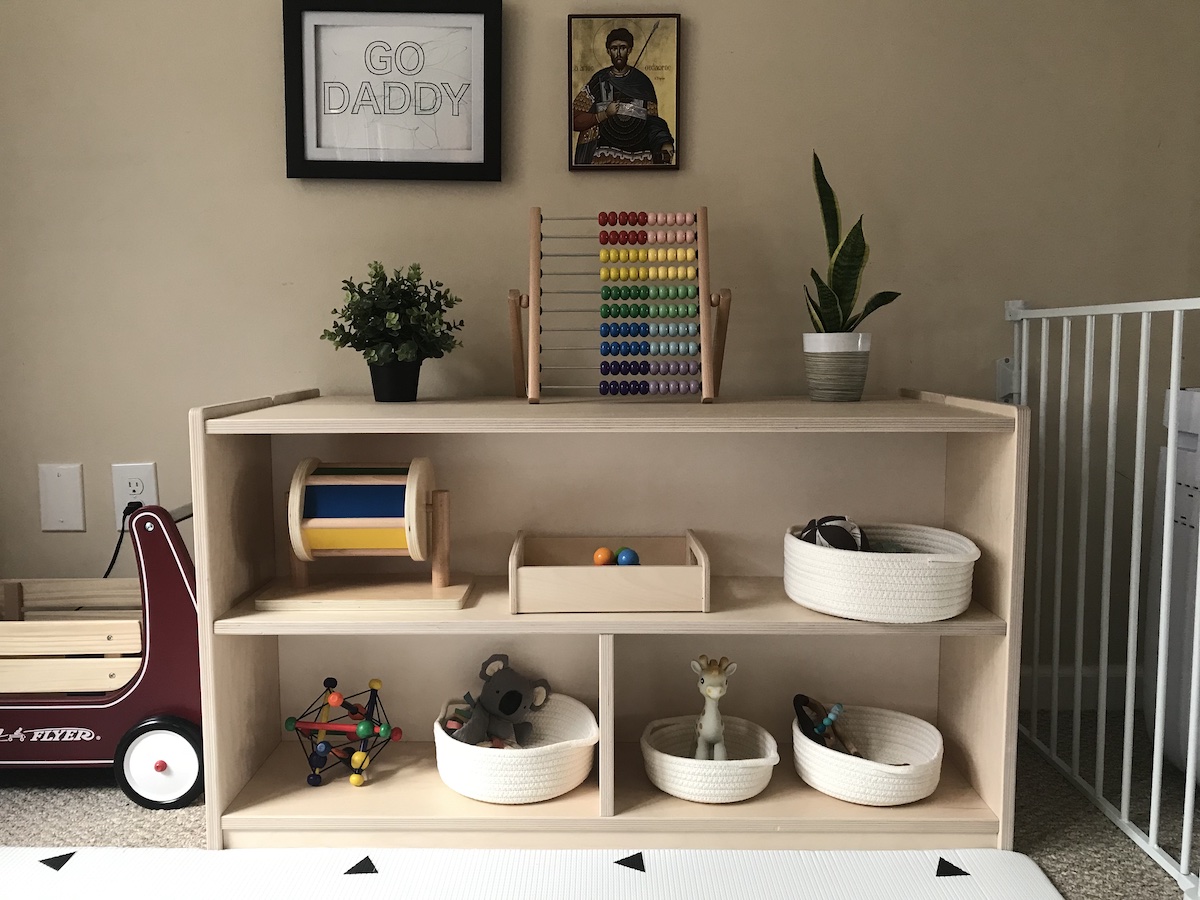
This post may contain affiliate links. This simply means that I will earn a small commission, at no cost to you, if you purchase through a link. I would and have recommended all of the products I list even without a link.
The goal of threading is to put a guide, such as a string, through a bead. This activity is a precursor to sewing, a practical life skill. Before a child progresses to string, they first work on what you’ll often see called stacking. The “string” in the following activities are stationary dowels, whereas the “bead” is any combination of rings or 3D shapes. These activities help develop fine motor skills, primarily hand-eye coordination, as well as strengthen the muscles in the arms, wrists, and fingers. As we progress through the levels, a child refines their hand movements and develops better hand, wrist, and finger control. The beads become smaller and require more advanced grips and the margin for error with the dowels decreases.
Note: the ages presented here approximate when to introduce the material. However, do not rely solely on these ages. It is better to see what level your child is at and choose the next level activity. A child’s interests and skills vary greatly. If your child is not interested or the material is too difficult, put it away for a few weeks and try again later.
Level 1: Rocking stacker
The first level is a traditional ring stacker with a twist: a rocking base and variable-width rod. This helps prevent the frustration that can occur early on from the stand falling over. In other words, a child’s movements don’t have to be precise, which is great because, at this age, they won’t be!
Approximate age: 8 months
See Level 1 Threading: Rocking Stacker for information on goals, materials, and how to present the activity.
Level 2: Large rings on a vertical dowel
The second level introduces a straight vertical dowel with very large rings. Similar to level 1, there is a high margin of error when putting the rings on, which helps to slowly refine hand movements.
Approximate age: 10 months
See Level 2 Threading: Large Rings on Vertical Dowel for information on goals, materials, and how to present the activity.
Level 3: Wooden discs on a vertical dowel
Level 3 introduces the wooden discs we will use in many of the future levels. The discs have narrower centers, which require the child to be more precise when placing them on the dowel.
Approximate age: 11 months
See Level 3 Threading: Wooden Discs on a Vertical Dowel for information on goals, materials, and how to present the activity.
Level 4a: Ring stacker with variable size
Level 4a introduces the first main variation: different-sized rings. If you remember in level 1, I said to hold off on giving all of the rings at once. At that time, we wanted to focus only on putting a ring on the stick. Now, after months of practice, we expect the child to have become very good at that part, so we can introduce a new skill: distinguishing between different sizes.
Approximate age: 12 months
See Level 4a Threading: Ring Stacker with Variable Size for information on goals, materials, and how to present the activity.
Level 4b: Cubes on a vertical dowel
With level 4b, we change the shape of the “bead”. Instead of rings, we now use a 3D cube. This allows the child to refine their grip and further improve hand-eye coordination and grip strength.
Approximate age: 12 months
See Level 4b: Cubes on a Vertical Dowel for information on goals, materials, and how to present the activity.
Level 5a: Wooden discs on colored dowels
Level 5a adds a new dimension to the already mastered “put disc on vertical dowel” activity in level 3. Now, there are 3 colored dowels as well as 3 different colored discs. This activity then becomes a way to introduce sorting by color.
Approximate age: 15 months
See Level 5a: Wooden Discs on Colored Dowels for information on goals, materials, and how to present the activity.
Level 5b: Multiple 3D shapes on a vertical dowel
By providing multiple 3D shapes, level 5b extends the already mastered cube activity in level 4b. The different shapes provide further refinement of a child’s grip and we begin sorting by shape.
Approximate age: 15 months
See Level 5b: Multiple 3D Shapes on a Vertical Dowel for information on goals, materials, and how to present the activity.
Level 6: Wooden discs on a horizontal straight dowel
Level 6 switches from a vertical dowel to a horizontal one, allowing fine motor refinement in a new axis of motion.
Approximate age: 16 months
See Level 6: Wooden Discs on a Horizontal Straight Dowel for information on goals, materials, and how to present the activity.
Level 7: Wooden discs on a horizontal serpentine dowel
The final level uses a curvy, or serpentine, dowel. The curvy dowel combines moving in multiple axes at once to accomplish a goal.
Approximate age: 17 months
See Level 7: Wooden Discs on a Horizontal Serpentine Dowel for information on goals, materials, and how to present the activity.
